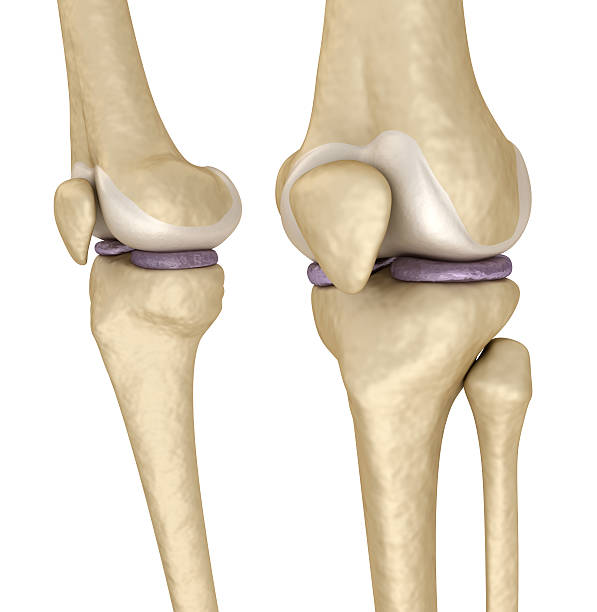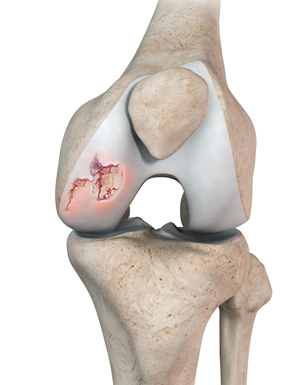¿Qué es la articulación de la rodilla?
La articulación de la rodilla es una articulación compleja en bisagra ubicada entre el fémur (hueso del muslo) y la tibia (hueso de la espinilla), con la rótula (hueso de la rodilla) situada en la parte frontal. Es esencial para soportar peso y para la movilidad, permitiendo la flexión y extensión, así como algo de rotación. La articulación está rodeada por una cápsula compuesta de ligamentos fuertes, incluidos el ligamento cruzado anterior (LCA) y el ligamento cruzado posterior (LCP), que estabilizan la articulación durante el movimiento.
El cartílago articular recubre los extremos del fémur y la tibia, proporcionando una superficie lisa para el movimiento y absorbiendo los impactos. Los meniscos, dos discos de cartílago en forma de C, actúan como amortiguadores y mejoran la estabilidad al mejorar el ajuste entre el fémur y la tibia.
En general, la anatomía intrincada de la articulación de la rodilla permite un amplio rango de movimiento mientras soporta cargas significativas, lo que la hace crucial para actividades como caminar, correr y saltar. El correcto funcionamiento y la salud de la rodilla son vitales para la movilidad general y la calidad de vida.


¿Qué es la cirugía de reemplazo de rodilla?
La cirugía de reemplazo de rodilla, también conocida como artroplastia de rodilla, es un procedimiento que consiste en reemplazar una articulación de rodilla dañada o desgastada por una articulación artificial (prótesis). Se realiza comúnmente para aliviar el dolor y restaurar la función en personas que sufren de artritis severa de rodilla u otros trastornos articulares.
La prótesis total de rodilla desarrollada por EgiFix Medical es un implante avanzado de tipo anatómico. Utiliza tecnología innovadora para garantizar un ajuste preciso y una funcionalidad óptima, adaptándose a la anatomía única de la rodilla humana. Este diseño tiene como objetivo mejorar la comodidad del paciente y la movilidad después de la cirugía.
Indicaciones
Esta prótesis está específicamente indicada para diversas condiciones de la rodilla, incluyendo:
- Painful and disabling knee conditions:
- Rheumatoid Arthritis: An autoimmune disorder that causes chronic inflammation in the joints, leading to pain, swelling, and eventual joint damage.
- Osteoarthritis: A degenerative joint disease characterized by the breakdown of cartilage, resulting in pain and stiffness, especially after periods of inactivity.
- Condiciones dolorosas y discapacitantes de la rodilla:
Artritis Reumatoide: Un trastorno autoinmune que causa inflamación crónica en las articulaciones, lo que lleva a dolor, hinchazón y eventual daño articular.
Osteoartritis: Una enfermedad degenerativa de las articulaciones caracterizada por la descomposición del cartílago, lo que resulta en dolor y rigidez, especialmente después de períodos de inactividad.
Artritis Traumática: Daño articular que ocurre debido a una lesión, como fracturas o desgarros de ligamentos, lo que lleva a dolor y reducción de la función articular. - Deformidad en varo: Conocida comúnmente como «piernas en arco,» donde las rodillas se desvían hacia afuera.
- Deformidad en valgo: Conocida como «piernas en X» o «rodillas juntas,» donde las rodillas se desvían hacia adentro. Esta prótesis ayuda a realinear la articulación de la rodilla a su posición adecuada, aliviando el dolor y mejorando la movilidad.
- Revisión de procedimientos de osteotomía o artrodesis fallidos:
- Esto se aplica a pacientes que previamente han sometido a cirugías de rodilla, como osteotomías (realineación ósea) o artrodesis (fusión articular), que no dieron resultados satisfactorios. La prótesis EgiFix puede ofrecer una nueva opción para restaurar la función y reducir el dolor en estos casos.
Componentes del reemplazo de rodilla
La cirugía de reemplazo de rodilla implica varios componentes clave que forman la articulación de rodilla artificial. Aquí tienes una visión general de los componentes principales utilizados en un reemplazo total de rodilla:
Componentes de un reemplazo total de rodilla
Componente femoral:
- Material: Usualmente hecho de metal (a menudo aleación de cobalto-cromo).
- Diseño: Este componente consta de una superficie metálica contorneada que reemplaza los cóndilos femorales, permitiendo un movimiento suave contra la tibia.
Componente tibial:
Espaciador de polietileno: Un insert de polietileno de alta densidad se coloca sobre la placa base, actuando como un cojín entre los componentes femoral y tibial. Ayuda a absorber los impactos y permite un movimiento suave.
¿Qué esperar después de la cirugía?
Después de la cirugía de reemplazo de rodilla, los pacientes pueden esperar un proceso de recuperación que comienza con una corta estancia en el hospital para monitoreo y manejo del dolor, seguida de incomodidad e hinchazón en las primeras semanas.
La fisioterapia generalmente comienza dentro de un día, enfocándose en restaurar el movimiento y la fuerza. Muchos pacientes usan muletas o un andador al principio, aumentando gradualmente su nivel de actividad.
Entre 6 a 12 semanas, la mayoría puede caminar con mínima asistencia y regresar a las actividades diarias, aunque se deben evitar ejercicios de alto impacto. La recuperación completa puede tomar varios meses, pero se suelen reportar un alivio significativo del dolor y una mejora en la función, lo que permite a los pacientes reanudar la mayoría de sus actividades con el tiempo.
Seguir las instrucciones de su cirujano y asistir a las citas de seguimiento es esencial para una recuperación óptima.


¿Cuáles son los riesgos?
La cirugía de reemplazo de rodilla, aunque generalmente segura, conlleva ciertos riesgos. Las complicaciones comunes incluyen infección, que puede ocurrir en el sitio quirúrgico; coágulos sanguíneos en las piernas o los pulmones; y dolor o rigidez persistente en la rodilla.
También existe el riesgo de fallo del implante, donde la prótesis puede desgastarse o aflojarse con el tiempo, lo que podría requerir una cirugía de revisión. Otros posibles problemas incluyen daño a los nervios, cambios en la longitud de la extremidad y dificultad para lograr un rango completo de movimiento.
Los pacientes con condiciones de salud preexistentes, como la obesidad o la diabetes, pueden enfrentar mayores riesgos. Hablar de estos riesgos con su cirujano puede ayudarlo a tomar una decisión informada.
¿Qué implante es mejor para mí?
Los tamaños de los implantes para el reemplazo de rodilla varían según factores como la edad del paciente, el género y el nivel de actividad física.
Los cirujanos consideran estos elementos para seleccionar la prótesis más adecuada, asegurando un ajuste y función óptimos. Por ejemplo, los pacientes más jóvenes y activos pueden necesitar implantes más robustos para resistir niveles más altos de estrés, mientras que los pacientes mayores pueden requerir diseños diferentes adaptados a sus niveles de actividad. Las diferencias de género también juegan un papel, ya que la anatomía masculina y femenina puede ser distinta. En última instancia, la experiencia del cirujano guía la decisión, buscando el mejor resultado posible en términos de comodidad, movilidad y durabilidad del implante.






